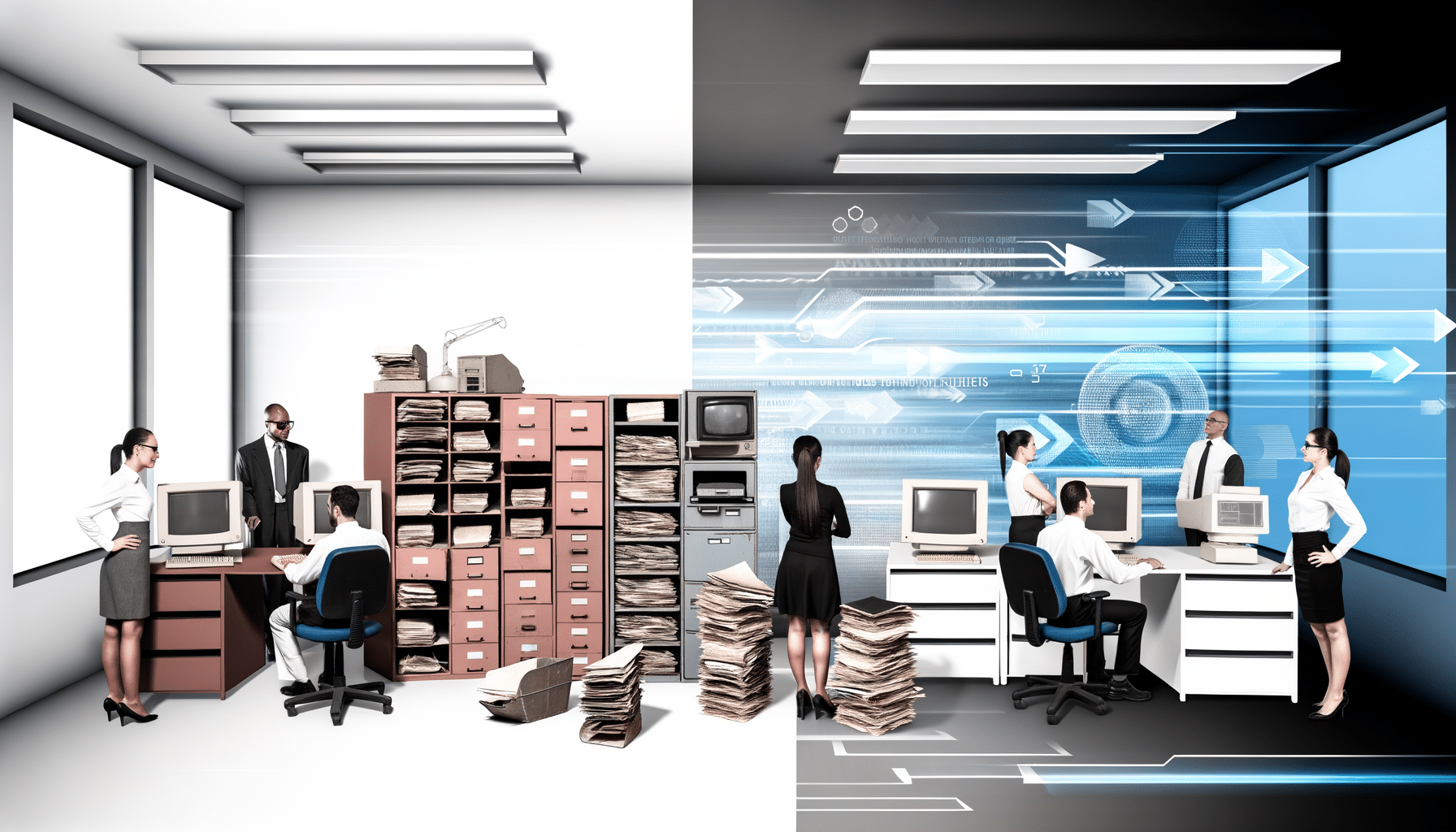Introduction
In the rapidly advancing digital landscape, traditional legacy systems often become bottlenecks, hindering efficiency and innovation. For organizations striving for excellence, transitioning from legacy systems to modern record-keeping platforms is not just necessary—it’s vital to stay ahead of the curve. The shift to advanced solutions promises enhanced operations, seamless compliance, robust data security, and more. In this blog, I will be guiding you through the steps and benefits of moving to an advanced record-keeping system, shedding light on why this transformation is a game-changer for your organization.
The Pitfalls of Legacy Systems
Understandably, many organizations hesitate when it comes to abandoning legacy systems that have served them for years. However, these systems are often plagued with limitations such as:
- High Maintenance Costs: They require continuous patching and updates, consuming significant resources.
- Lack of Flexibility: Their rigid structures limit adaptability to new business processes and technological advancements.
- Poor Compliance: Staying compliant with dynamic regulations becomes onerous, posing risk to data integrity and security.
- Integration Issues: Incompatibility with emerging tech leads to siloed operations and lack of innovation.
Embracing Transition: Steps to Modernization
1. Assessment and Strategy
Begin by conducting a thorough assessment to understand the current system’s limitations and requirements. Engage with stakeholders across departments to identify critical needs and goals. This will form the cornerstone of your modernization strategy.
2. Choose the Right Modern Platform
Selecting a new record-keeping platform is pivotal. Opt for a solution that not only meets current needs but is also scalable for future growth. Key features to consider include:
- Automated Categorization: Look for AI-driven tools that facilitate easy retrieval of records.
- Security Features: Ensure the platform offers secure data rooms and activity tracking capabilities for sensitive records.
- Compliance Management: The system should simplify adherence to industry standards such as GDPR and HIPAA.
- Blockchain Integration: To ensure tamper-proof and immutable records, look for blockchain capabilities.
3. Plan and Execute Migration
Careful planning and execution are crucial during the migration phase. Develop a roadmap that includes data cleaning, format conversion, and a phased migration approach to minimize disruptions. Employ automated tools where possible to ensure seamless and error-free transitions.
4. Training and Change Management
Transition isn’t just about technology; it’s also about people. Foster a culture of change by engaging with users, providing training sessions, and creating support networks to ease adaptation. Highlight how the new system alleviates daily pain points and enhances their workflow.
5. Continuous Evaluation and Improvement
The transition to modern record-keeping is an ongoing journey. Continuously monitor the system’s performance, gather feedback, and adapt processes as necessary. Foster a culture of continuous improvement to maximize the platform’s potential.
The Benefits of Modern Record-Keeping Platforms
The transition from legacy systems to modern solutions reaps substantial rewards, including:
- Enhanced Efficiency: Automation streamlines record management processes, allowing teams to focus on value-added activities.
- Seamless Compliance: Built-in regulatory workflows ensure adherence to changing guidelines, mitigating risk.
- Data Security: With robust security measures, sensitive records are protected from breaches, enhancing trust.
- Strategic Advantage: Advanced analytics provide insights that drive decision-making and strengthen competitive positioning.
Conclusion
Transitioning from legacy systems to modern record-keeping platforms is not just an upgrade—it’s a strategic evolution that can redefine how organizations operate and thrive. By embracing advanced technologies, businesses can safeguard data integrity, boost productivity, and pave the way for growth and innovation. I invite you to explore the possibilities with RecordsKeeper.AI and modernize your record management process to harness security, compliance, and efficiency like never before.
For more insights and guidance on modernizing your organization’s record-keeping capabilities, follow my blog journey, and let’s revolutionize your business operations together.








